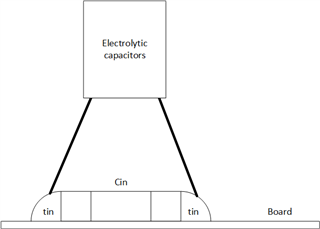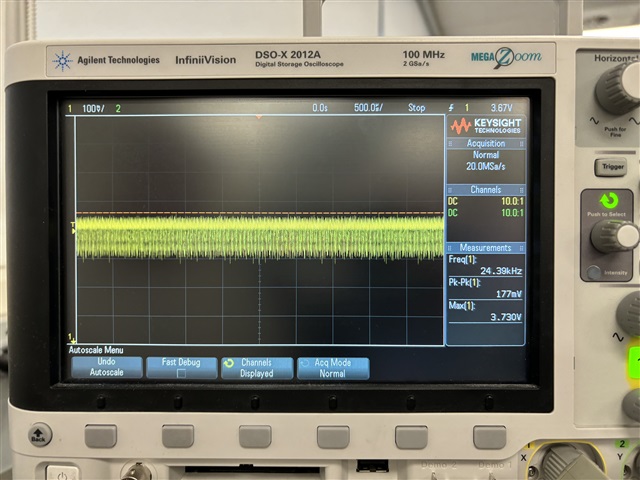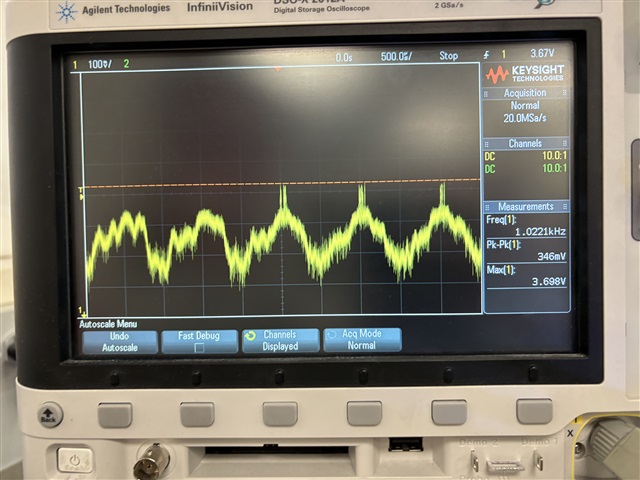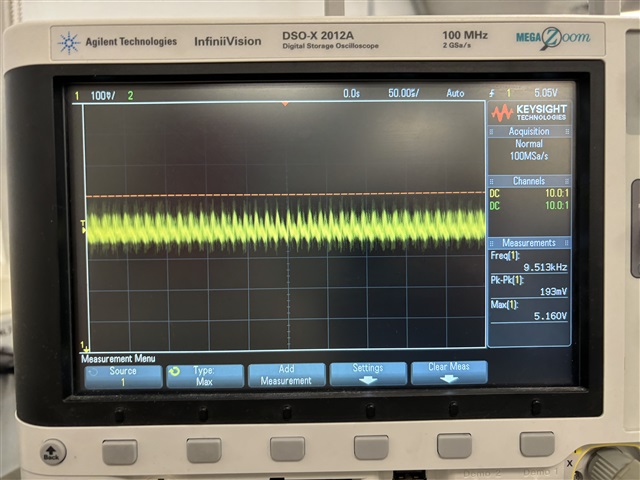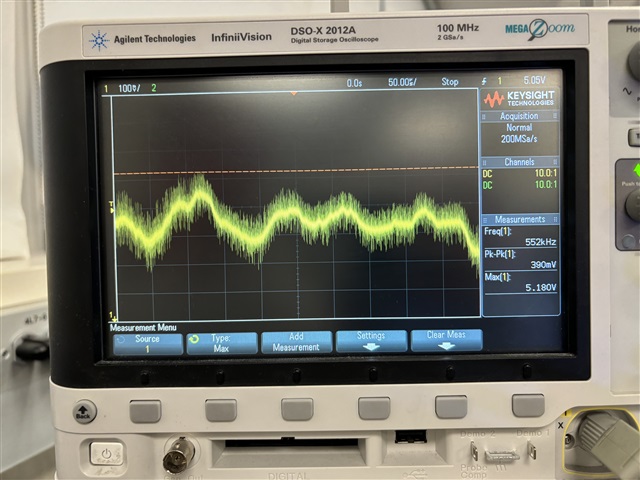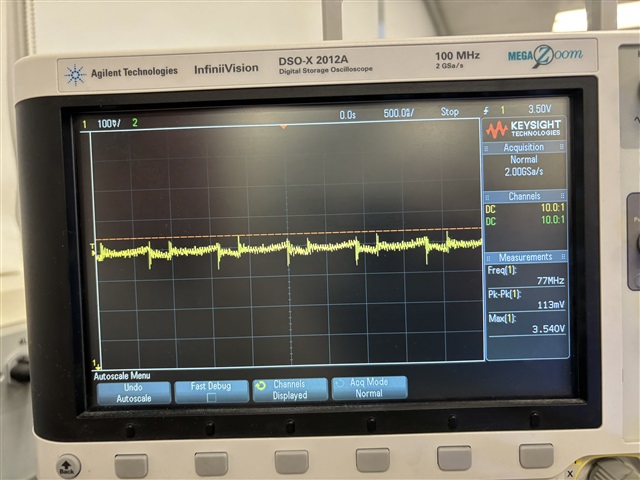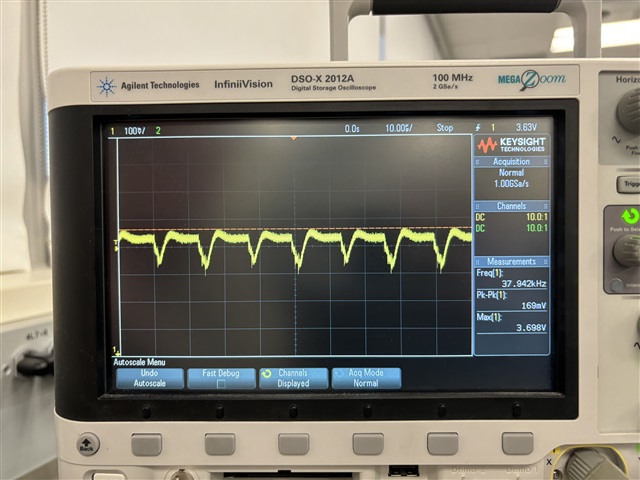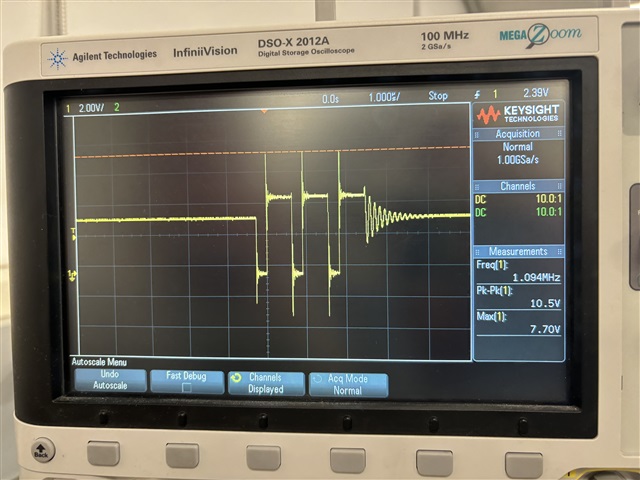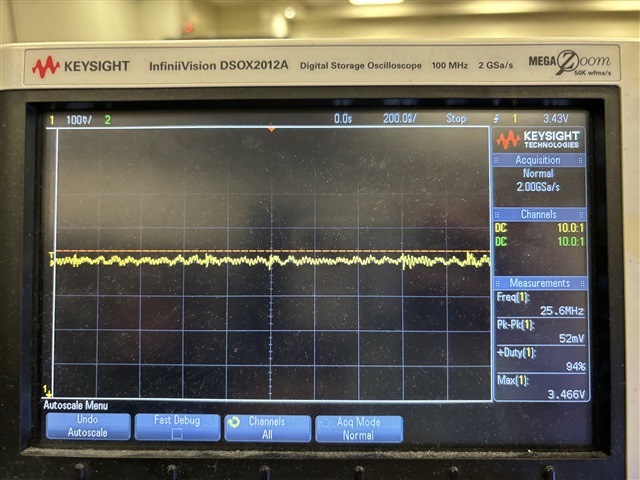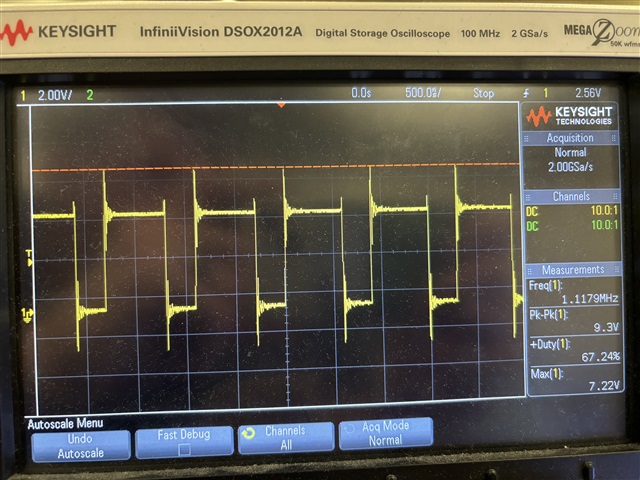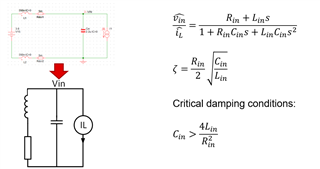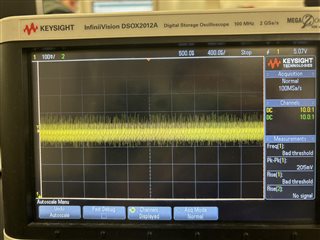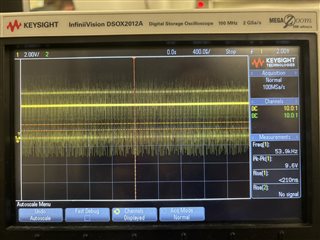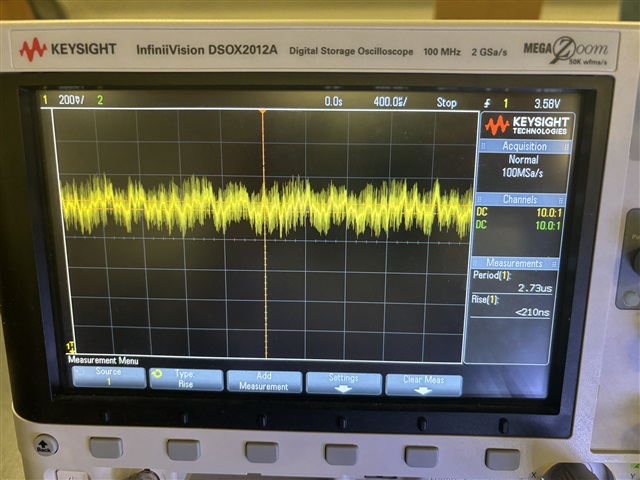Hello,
I am a student working on a project. I am using this part to boost a lipo battery to 5V. I am getting the functionality I want, but I am hearing some audible ringing that I believe is coming from the inductor (possibly the output capacitors?). The pitch increases as the current pulled from the output increases. I am assuming this is a sign of a fault in my design or layout, and I am hoping to get some assistance in debugging this issue.
I have attached a screenshot of my schematic and my board layout of the boost portion of the board, as well as the components that I am using. Please let me know if I can provide any other information that might help us solve the issue. Any other feedback on the provided information is appreciated as well, as I would really like to improve my design skills.
| 10uF | Capacitor | 0603 | C1608X5R1A106K080AC | |
| 10pF | Capacitor | 0603 | CC0603JRNPO9BN100 | |
| 22uF | Ceramic, 10V | 0805 | GRM21BR61A226ME44L | |
| 0.01uF | Ceramic, 10V | 0402 | GRM155R61A103KA01D | |
| 1uH | Shielded, Composite | 1616 | XAL4020-102MEC | |
| 316k | .1W | 0603 | CRCW0603316KFKEA | |
| 100k | .1W | 0603 | CRCW0603100KFKEA |
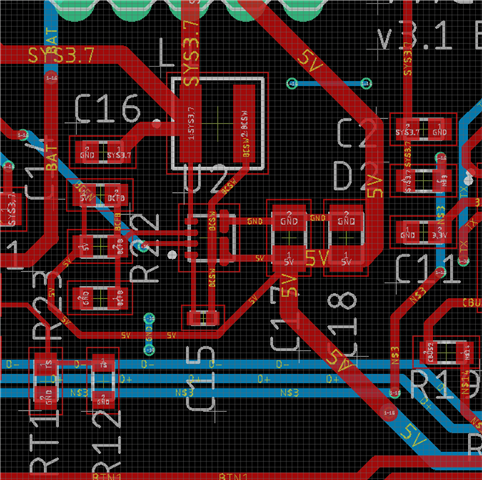


above photo to show ground planes


